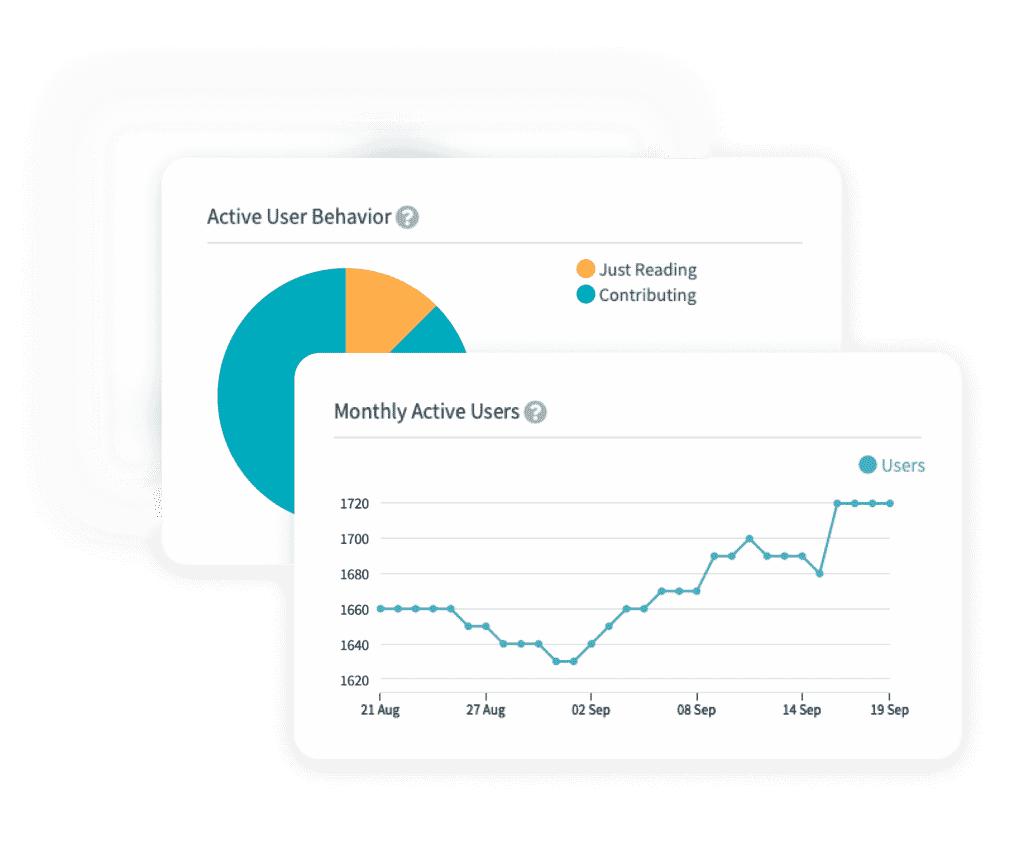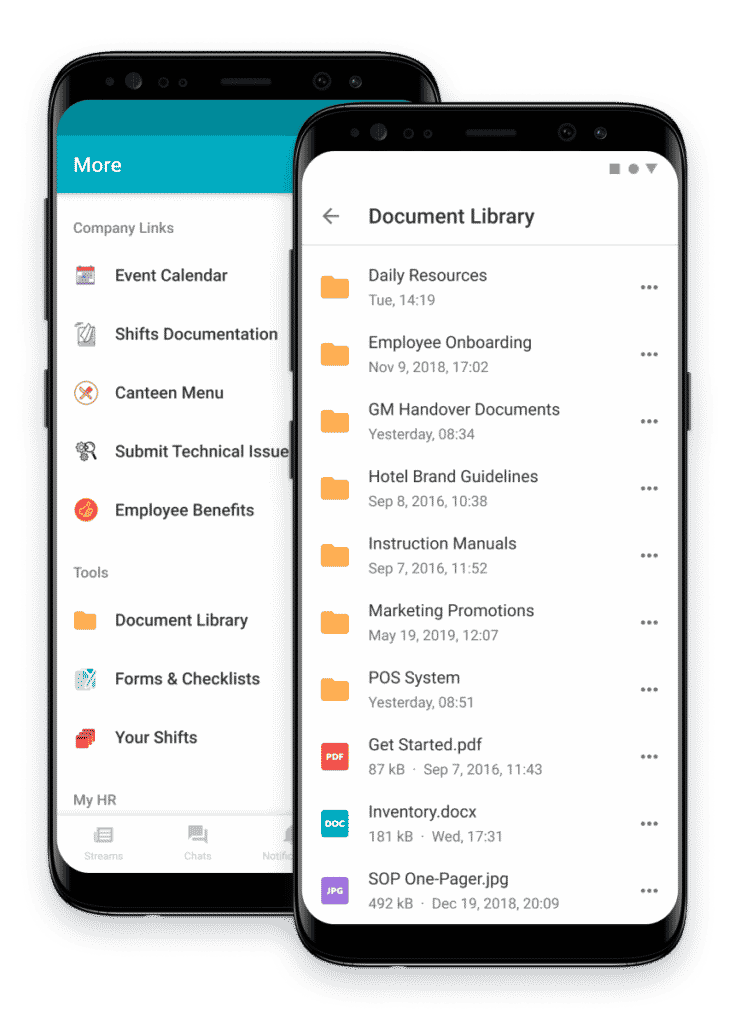There’s no way to know when a crisis will hit and how long it will last. The only thing that is certain is that your company should be prepared for anything. Crisis management software can support an organization’s ability to efficiently navigate unfamiliar situations, minimize interruptions to their operation, and support seamless communication.
Use this crisis communications checklist as a guide to choosing the right software to keep your team connected.
Often, when a sudden and unexpected event happens, companies are unable to redirect their workflows and adjust communication protocols to ensure business continuity.
That requires a two-part strategy:
- Crisis management software: Facilitates channels of communication over cloud-based networks to ensure business continuity and an aligned workforce.
- Crisis management plan: A well-choreographed playbook that outlines the procedures for any unexpected event.
A crisis communication tool allows leaders to deliver transparent information to keep employees calm, focused, and aligned to support the coordination of an organization’s crisis response.
Pro tip: Preparation is the key to surviving a crisis. Be ready for any situation by implementing the right software before an unexpected event happens.
Who Needs Crisis Management Software and Why?
In August, 2019, one Global Crisis Survey found that 95% of companies expected to face some sort of crisis in the future. Turns out they were right. It also revealed that 69% of companies had experienced a crisis in the past five years.
Who needs crisis management software? In short, every business can benefit from the ability to strengthen communication during a disruptive event.

But as we’re witnessing with the COVID-19 global pandemic, many businesses in industries that rely on frontline workers—like manufacturing, grocery retail, healthcare—are operating throughout the duration of this crisis. The right software can connect these dispersed frontline workers still on the job to keep them up to date on real-time information that affects their safety and their work.
Look for a communication tool with the following capabilities to ensure every employee is aligned with your crisis communication plan.
1. Mobile-First Emergency Communication Software to Include Frontline Workers
Emergency management software is an essential tool for any company, but it’s especially helpful for industries with mobile, dispersed workforces. In other words—frontline workers. They make up 80% of the world’s workforce and, in times of crisis, often take the brunt of the impact since they are the ones still on the job.
Let’s look at the COVID-19 pandemic as an example. Frontline workers are:
- Healthcare professionals. They make up 20% of the world’s frontline workforce and they are the ones leading the charge against the pandemic in roles like taking care of the sick, protecting the elderly, and driving ambulances.
- Food retail associates. One of the few retail verticals allowed to remain open has been grocery stores. Retailers are working long hours to disinfect stores, order supplies, and stock shelves.
A mobile employee communication app can create a unified crisis response by aligning every employee with the latest details from leadership.
With over 1,000 employees spread across 10 states in the southeast, The Budd Group has always prioritized communication with its frontline workforce. Now, that communication is even more important.
As a facility management company specializing in janitorial and maintenance services, the company has shifted its procedures and is following CDC-suggested disinfecting protocols.
Using Beekeeper’s mobile software, leaders have created a culture of safety throughout their organization to connect with their dispersed workforce. They share critical information, post safety training videos, and send real-time alerts about a crisis situation—from extreme weather to a highly-contagious disease that can impact their employees and how they service their clients’ facilities.
“Having Beekeeper has allowed us to reach out and be engaged across all levels of our company, especially our frontline employees who are the ones who really make a difference in what we do.”
Joseph R. Budd, The Budd Group
2. An Adaptable Platform that Can Pivot from Ordinary Business to Extraordinary Conditions
For an effective transition from everyday operations to immediate crisis communication, look for digital tools that can double as emergency communication software.
In the blink of an eye, a company can face any number of events that can impact different aspects of their business—financial, legal, data security, brand reputation, facilities, and safety.
For example, a computer is hacked every 39 seconds, according to a University of Maryland study. A cybersecurity crisis like this could derail a company’s operations and lead to damaging data leaks, impacting its brand reputation and reducing its customer base.
Despite these different threats, many companies do not have a plan, infrastructure, or digital tools to handle a massive disruption. But a robust internal communication tool with the right features can seamlessly transition to support operations during an unexpected event.

Some of those features include:
- Real-time capabilities to keep pace with a rapidly-changing situation
- Inline translation so every employee can send and receive messages
- Confirmation campaigns to ensure employees read and receive alerts
- Group chats for peer-to-peer coordination and collaboration when a crisis keeps them apart
- Document library for sharing vital safety information
3. Bottom-Up Communication for Workforce Well-Being and Insight
In everyday business, a digital tool that facilitates two-way communication creates an inclusive environment. This strategy delivers results like greater employee engagement, a highly collaborative workforce, and better customer service.
During a crisis, creating a channel for frontline workers to have a voice carries even greater weight for an organization.
- Surveys allow leaders to keep their pulse on the health and wellbeing of their workforce in the unpredictable and stressful environment a crisis creates.
- Managers can glean valuable insight from their frontline workers—who are the most hands-on teams—in order to make well-informed decisions.
- A workforce app creates a space for employees to ask questions in order to feel secure at work during a crisis.
- Leaders can assess their crisis management plan with post-crisis response feedback to find out how the plan played out on the frontlines.
- Peer-to-peer communication streams can create a supportive environment for dispersed colleagues.
4. Detailed Analytics for Data-Driven Crisis Management
Simply being able to communicate with your employees is a good start, but fully-loaded crisis management services should have an analytics dashboard that provides detailed information about your workforce.

During normal business operations, analytics can give you a read on employee engagement. In a crisis, everything is upended and it can take its toll on your workforce. They can become anxious and lose focus.
A dashboard can help you keep tabs on every employee to make sure they’re receiving all crisis-related alerts and messaging. If you notice a worker who is less engaged than usual, make sure to check in on them.
In a crisis, like COVID-19, that extends to people’s personal lives as well, they might be experiencing extra hardships. Find ways to support them to improve their well-being both at work and at home.
Pro tip: Employee engagement is just as important during a crisis. Keep an eye on how your workforce is doing and use your communication tool to check in with them.
5. Advanced Business Continuity Capabilities
The unpredictable nature of a crisis means it hits unexpectedly and has no end date. Right now, companies are in a holding pattern, waiting for state leaders to determine when it’s safe to resume normal operations. Other companies have continued working but have had major disruptions to their workflows.
No matter how a company has been forced to shift business practices, incident management software can ensure continuity that connects your company before, during, and after a crisis. Capabilities you should look for in a software to achieve continuity include:
- Automation: Whether it’s a natural disaster, a data breach, or a suddenly dispersed workforce, business continuity keeps operations running like usual. When a company selects an internal communication tool that can automate routine administrative processes, like payroll, the transition to a crisis scenario will have fewer disruptions.
- Cloud-based network: A crisis can often make traditional communication methods inaccessible. With a cloud-based network, employees are reachable, can continue to communicate with colleagues and managers, and access essential documents and information kept online rather than papers filed in a closed office.

- Scheduling: A workforce communication platform with shift schedule capabilities enables workers to manage their schedules on their mobile device. Workers can continue to receive their weekly schedules and swap hours directly with colleagues which will reduce absenteeism during a crisis.
- Multi-channel messaging: Over the course of a day, employees might use different methods of communication to accomplish their work. A platform like Beekeeper supports business continuity with multi-channel communication, from voice messaging to group chats to direct messaging.
3 Ways to Use Crisis Management Software for a Resilient Workforce
Once you’ve settled on the right digital crisis communication solution to support your business, create dedicated crisis streams and alerts. But maintain a sense of normalcy in your communication, too. In other words, maintain your day-to-day strategies and practices to keep your workforce engaged.
Here are three examples:
1) Employee recognition
The middle of a crisis might not seem like the right scenario to use internal communications for employee recognition, but it’s actually the perfect time. Employees need to know their work is making a difference and is helping to get the company, and their colleagues, through a crisis. Simply recognizing when employees go above and beyond can boost engagement by 72%. Keep engagement and productivity numbers elevated by using this same strategy during a crisis.
2) Collaboration
A digital workplace can support both crisis communication as well as normal business communication simultaneously through dedicated streams. Find ways for employees to work “together” over their workforce app. It will help keep the momentum going, limit disruption, and keep employees feeling connected. This is especially important for frontline workers who can feel even more isolated during a crisis.
3) Share customer feedback
A crisis can create a dark cloud over a workforce. During a time like right now, employees might feel torn between being home with their families and needing to work. When you receive positive feedback from your customers, share it over your real-time communication tool to keep their spirits up and bring even deeper meaning to their work. Let your workers know they are valued and important when it matters the very most to your company and to them.
Learn how to maintain effective communication and operational continuity through a crisis with Next Normal Package.
Most Frequently Asked Questions
1. Employee recognition
2. Collaboration
3. Share customer feedback







